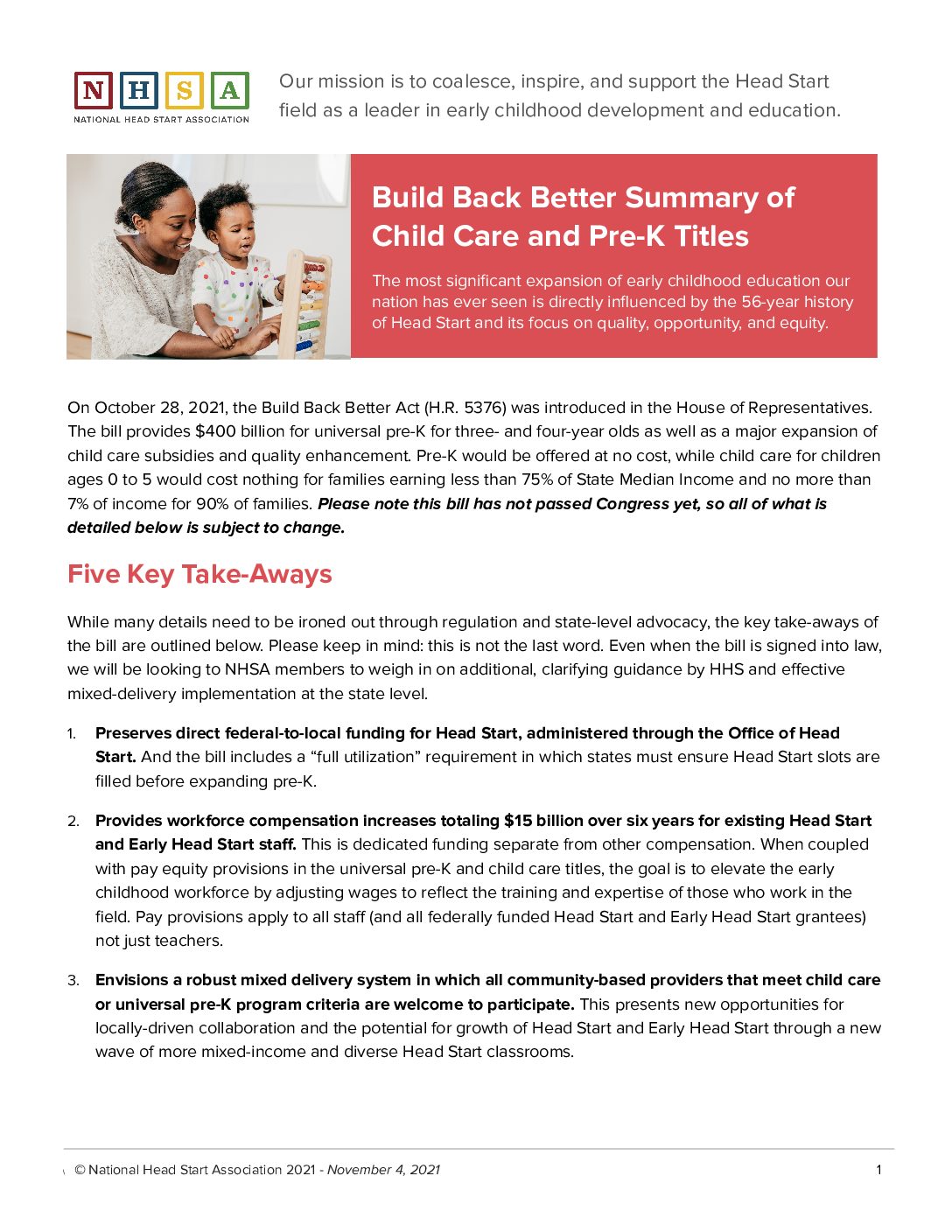On October 28, 2021, the Build Back Better Act (H.R. 5376) was introduced in the House. The bill provides $400 billion for universal pre-K for three- and four-year olds as well as a major expansion of child care subsidies and quality enhancement. Pre-K would be offered at no cost, while child care for children ages 0 to 5 would cost nothing for families earning less than 75% of State Median Income and no more than 7% of income for 90% of families. Please note this bill has not passed Congress yet, so all of what is detailed below is subject to change.
Five Key Build Back Better Take-Aways
While many details need to be ironed out through regulation and state-level advocacy, the key take-aways of the bill are outlined below. Please keep in mind: this is not the last word. Even when the bill is signed into law, we will be looking to NHSA members to weigh in on additional, clarifying guidance by HHS and effective mixed-delivery implementation at the state level.
-
- Preserves direct federal-to-local funding for Head Start, administered through the Office of Head Start. And the bill includes a “full utilization” requirement in which states must ensure Head Start slots are filled before expanding pre-K.
- Provides workforce compensation increases totaling $15 billion over six years for existing Head Start and Early Head Start staff. This is dedicated funding separate from other compensation. When coupled with pay equity provisions in the universal pre-K and child care titles, the goal is to elevate the early childhood workforce by adjusting wages to reflect the training and expertise of those who work in the field. Pay provisions apply to all staff (and all federally funded Head Start and Early Head Start grantees) not just teachers.
- Envisions a robust mixed delivery system in which all community-based providers that meet child care or universal pre-K program criteria are welcome to participate. This presents new opportunities for locally-driven collaboration and the potential for growth of Head Start and Early Head Start through a new wave of more mixed-income and diverse Head Start classrooms.
- Builds upon a foundation of equity. The bill requires initial expansion in high-needs communities first. It authorizes enhanced payments to serve children from at-risk backgrounds in order to provide comprehensive services as defined in the Head Start Act, including “health, educational, nutritional, social, and other services,” based on family needs assessments.
- Directly funds Head Start if a state declines to participate in either title. In states that decline to participate in the universal pre-K program, localities (which include Head Start programs) can apply directly to HHS for funding and an additional $1.9 billion per year is available for Head Start to fill coverage gaps. For child care, expansion of Head Start and Early Head Start is funded at $2.85 billion per year to fill gaps in coverage as identified by HHS.

